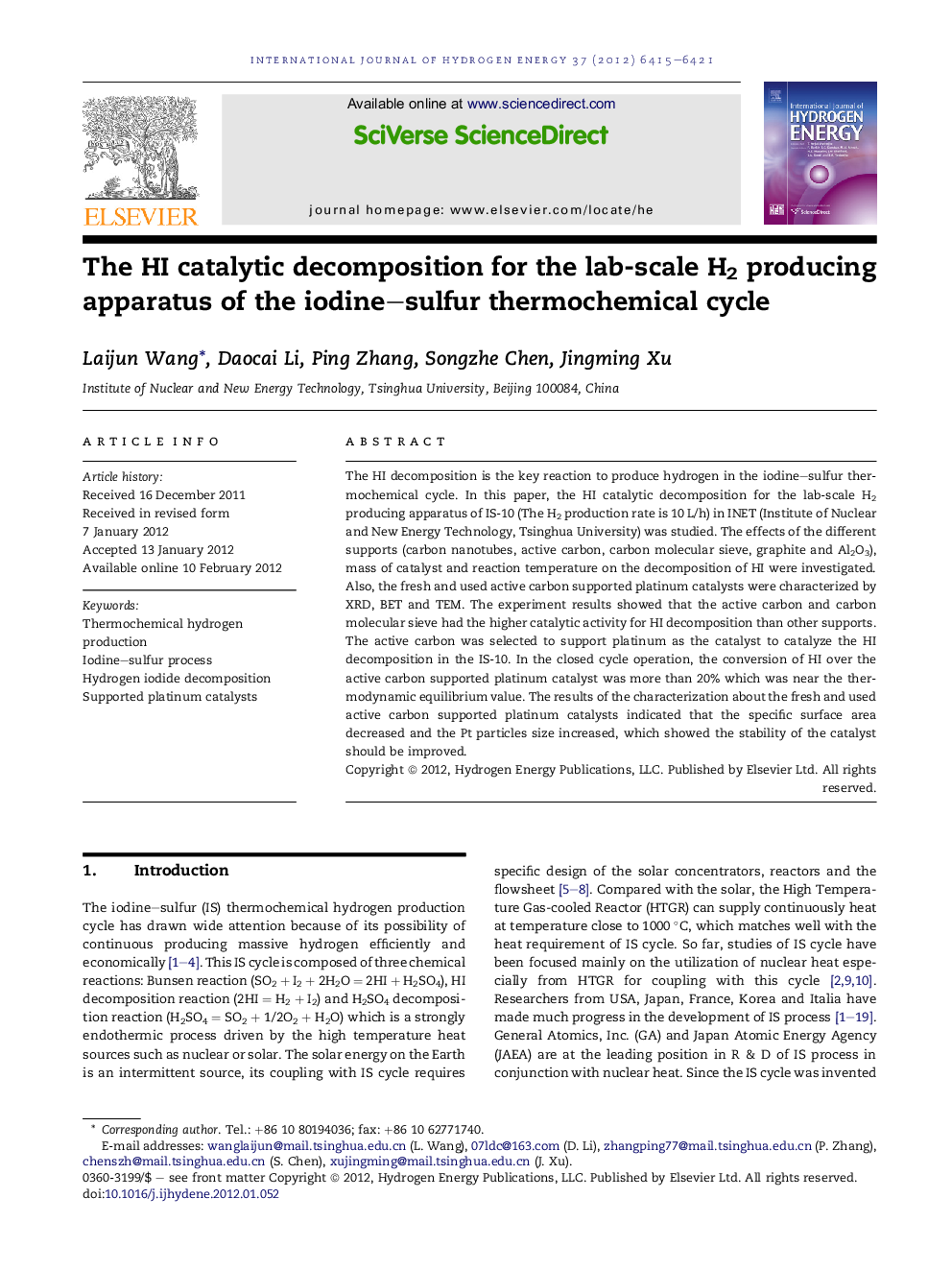| Article ID | Journal | Published Year | Pages | File Type |
|---|---|---|---|---|
| 1276582 | International Journal of Hydrogen Energy | 2012 | 7 Pages |
The HI decomposition is the key reaction to produce hydrogen in the iodine–sulfur thermochemical cycle. In this paper, the HI catalytic decomposition for the lab-scale H2 producing apparatus of IS-10 (The H2 production rate is 10 L/h) in INET (Institute of Nuclear and New Energy Technology, Tsinghua University) was studied. The effects of the different supports (carbon nanotubes, active carbon, carbon molecular sieve, graphite and Al2O3), mass of catalyst and reaction temperature on the decomposition of HI were investigated. Also, the fresh and used active carbon supported platinum catalysts were characterized by XRD, BET and TEM. The experiment results showed that the active carbon and carbon molecular sieve had the higher catalytic activity for HI decomposition than other supports. The active carbon was selected to support platinum as the catalyst to catalyze the HI decomposition in the IS-10. In the closed cycle operation, the conversion of HI over the active carbon supported platinum catalyst was more than 20% which was near the thermodynamic equilibrium value. The results of the characterization about the fresh and used active carbon supported platinum catalysts indicated that the specific surface area decreased and the Pt particles size increased, which showed the stability of the catalyst should be improved.
► Different supports and supported Pt catalysts were used for HI decomposition. ► HI conversions over supports followed the decreasing order of CMS > AC > GR > CNT > Al2O3. ► Pt catalysts activities decreased in order of Pt/CNT > Pt/AC > Pt/CMS > Pt/GR > Pt/Al2O3. ► The HI conversion over Pt/AC in IS-10 was 20% with the H2 production rate of 10 L/h. ► Analyses of fresh and used samples showed that the stability of Pt/AC was not good.
